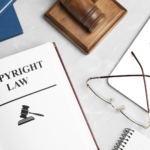Defective drugs can cause life-long damage to a person, but proving that a drug caused an injury is not easy. Nevertheless, it is important for people to come forward and challenge the drug companies if they believe they’ve been injured. Proving that a drug is defective can save the health and lives of countless others.
Like other civil cases, the basics for proving you need compensation for an injury are the same. First, you need to prove you’re injured. Next, you need to put forth a reason why you are injured. Finally, you have to prove that the reason caused the injury.
We can do this with Thalidomide, an infamous drug. Thalidomide’s purpose was to reduce morning sickness in pregnant women. It worked, but it also caused horrible birth defects. A link was established between the two and the drug was pulled from the market.
The hard part is proving that the drug is the reason for the injury. The gathering of expert testimony is crucial, and the drug companies will fight tooth and nail with their own studies. They have a good reason. Unlike many injury cases, drug companies don’t have to be negligent to be guilty. Drug cases are ruled on strict liability, which means you don’t have to prove the company was negligent. You just have to prove the link between the drug and the injury.
If a link between an injury and a drug is proven, the next question the courts have to answer is why. There could be several reasons and not all of them are favorable to the injured. They include, but aren’t limited to:
* A manufacturer’s failure creates a bad or impure form of the drug that makes it to market.
* A doctor prescribes a drug for “off-label” purposes and it causes injury for that use.
* A drug’s warning labels weren’t clear enough or lacking information necessary to prevent injury.
* An injurious side effect not caught in testing hurts the public.
* The injured person took the drug incorrectly.
* The injured person failed to obey the listed warnings for the drug.
The Food and Drug Administration approves drugs once a company proves to their satisfaction that a new drug has more benefit than harm. There’s a very good reason why drug commercials always list potential side effects! That thick stack of paper you get after buying a new drug from the pharmacy has lots of information about how to take it correctly and what side effects are possible.
If you are hurt by a drug and it’s found that you didn’t read or follow the existing warnings, then your chances of success are slim. Most of us trust doctors to give us the right medications, but you should always read over the warnings of a new drug or have your pharmacist do it for you just in case. In fact, pharmacists require you to sign off that you didn’t want a new drug explained to cover their own liability.
If you do prove your injury, then the FDA can step in and require new studies. They could add additional warnings, including mandatory ones that doctors must reveal. They could pull the drug from the market entirely. They can punish manufacturers who let their standards slip. If your doctor was the one who gave you the wrong drug, they can be sued for malpractice.
Proving that a drug is defective is a long and often expensive process. They often turn into class action claims because it’s easier to prove a defect when a large group of people experiences the same injuries from a drug. However, this shouldn’t deter you from stepping forward if you feel you’ve been injured by a drug. Your effort could make prescription drugs safer for everyone.
Contact us today for a Free Consultation





